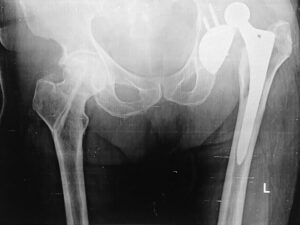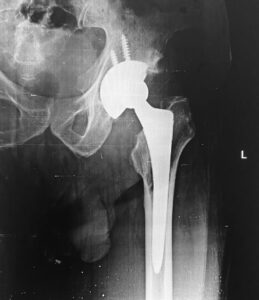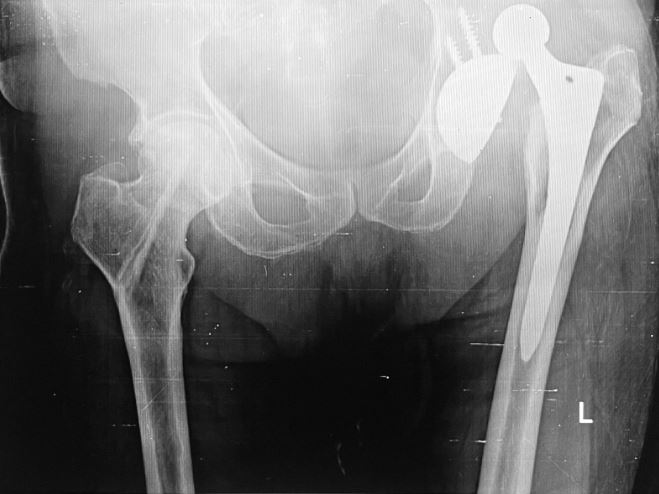A 65-year-old male, was admitted to Gadge Hospital with complaints of pain and shortening of the left lower limb following a fall. He had a history of total hip replacement surgery performed 20 years ago. On examination limb was short and internally rotated thus suggestive of Hip Dislocation
Patient History:
He reported a history of total hip replacement surgery two decades prior due to hip osteoarthritis. He had been leading a relatively normal life post-surgery until the recent fall, which resulted in significant discomfort and shortening of his left lower limb. He denied any recent trauma apart from the fall.

Clinical Examination:
Upon examination, He appeared distressed due to pain. His left lower limb was notably shortened by approximately 5 to 10 cm compared to the contralateral side. Hip was internally rotated and adducted. There was no Neurological involvement
Investigations:
Radiographic imaging, including X-rays were conducted to assess the hip joint’s condition. These imaging modalities would provide crucial information regarding the integrity of the hip prosthesis, potential dislocation, and any associated fractures or soft tissue injuries.
Diagnosis:
Based on the patient’s history, clinical presentation, and imaging findings, the diagnosis of post-traumatic dislocation of the left hip joint following the fall was established. The previous total hip replacement likely rendered the joint more susceptible to dislocation, particularly in the setting of trauma.
Treatment:
Immediate closed reduction of the dislocated hip joint was deemed necessary to alleviate the patient’s pain, restore limb length, and prevent further complications. This procedure involves manipulating the joint back into its proper position without surgical intervention. After successful reduction, the patient was placed on strict bed rest to allow for adequate healing and stability of the joint.
Post-Treatment Follow-Up:
Following the closed reduction, Mr. X was closely monitored for any signs of complications, such as neurovascular compromise, loosing of cup, fracture and recurrence of dislocation. Physical therapy and rehabilitation were initiated to improve range of motion, strength, and mobility of the affected limb. Long-term follow-up appointments were scheduled to assess the hip joint’s stability and functionality.

Conclusion:
This case highlights the challenges associated with post-traumatic complications in patients with a history of total hip replacement surgery. Prompt recognition and appropriate management, including closed reduction of the dislocated joint, are crucial in achieving favourable outcomes and minimizing long-term morbidity in such cases. Collaboration between orthopaedic surgeons, neurologists, and rehabilitation specialists is essential to optimize patient care and recovery.
